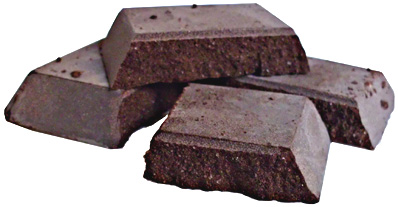...Best of Sicily presents... Best of Sicily Magazine. ... Dedicated to Sicilian art, culture, history, people, places and all things Sicilian. |
by Roberta Gangi | ||
Magazine Index Best of Sicily Arts & Culture Fashion Food & Wine History & Society About Us Travel Faqs Contact Map of Sicily |
The Spaniards ruled the Kingdom of Sicily from the War of the Vespers (in 1282) until the eighteenth century. The Spanish influence over the island led to the introduction of various fruits and vegetables discovered in the Americas. A few prominent examples are tomatoes, potatoes and tobacco. Sicily's chocolate-making center was - and is - Modica, near Ragusa. It was probably introduced in connection with the influence of the Cabrera family, which held Modica as a fief into the early decades of the sixteenth century. The Cabrera were originally Catalonian. Though they had lived in Sicily for centuries, they maintained their close ties to Spain. It was unsurprising that Anna Cabrera, heir of John Cabrera, count of Modica, wed a Castilian admiral, Frederick Enriquez. Little is known of Enriquez, but his travels took him to the Americas, and he was probably the one who introduced chocolate production in Sicily. This, of course, was a "cold" process very different from Cadbury's, which used heat. To this day, Modican chocolate adheres to the original Aztec recipe and has a very granular texture. Another Aztec characteristic is the addition of flavors such as vanilla and hot red pepper. Both of these crops were brought to Europe from the Aztec culture; Hernando Cortez introduced a drink made from cocoa and vanilla. Only later did vanilla become popular as a flavor unto itself. Another "condiment" added to Modican chocolate is dried orange rind. Today Sicily is one of the few places where Aztec-type chocolate is made (a firm in Spain has also preserved the tradition). Made from pure cocoa powder, it contains less of the natural fat (cocoa butter and chocolate liquor) and none of the additives of "modern" chocolate except sugar. It its purest form, it is invariably dark and contains no milk. Modican chocolate, which has its own definition in European Union law, is readily ground or crushed for flavoring milk or pastries. It is also the flavoring for chocolate rabbit, a specialty in Malta and Ragusa. Yes, it is roasted rabbit covered in an unsweetened chocolate sauce. Grated Modican chocolate sprinkled over caponata makes that cold salad "Baroque." The point here is that chocolate wasn't always a sweet confection. In former times it was a versatile flavor. Moderate servings of dark chocolate are healthy for your heart, and the chocolate of Modica is dark chocolate in its purest form. If you're a chocolate connoisseur you owe it to yourself to try Modican chocolate at least once. About the Author: Roberta Gangi has written numerous articles and one book dealing with Italian cultural and culinary history, and a number of food and wine articles for Best of Sicily Magazine. | |
Top of Page |
 Chocolate (possibly
from xocolatl in the Aztec language), the product of cacao, the fruit
of the cocoa tree, made its way into Europe - through Spain - during the
sixteenth century. The granular chocolate made by the Aztecs bore little
resemblance to the emulsified product developed in England by John Cadbury
in the nineteenth century, but it was the Aztec chocolate that was introduced
in
Chocolate (possibly
from xocolatl in the Aztec language), the product of cacao, the fruit
of the cocoa tree, made its way into Europe - through Spain - during the
sixteenth century. The granular chocolate made by the Aztecs bore little
resemblance to the emulsified product developed in England by John Cadbury
in the nineteenth century, but it was the Aztec chocolate that was introduced
in